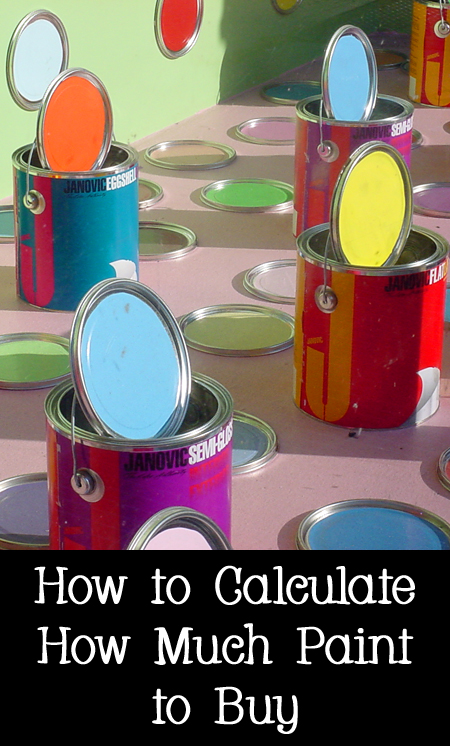Running out of paint halfway through a painting project is extremely frustrating and inconvenient. Nobody wants to stop a project before it is complete to go back to the store to buy more paint (lets hope the paint store has not closed for the night and that your clothes are clean enough to not get paint all over your car).
Purchasing too much non-refundable paint is a waste of money. What will you do with the extra paint after you have painted? It will just take up space in your garage or storage room.
Here are the basic steps to determine how much paint to purchase when painting a room in your home.
 photo courtesy of skeddy in NYC flickr.com/photos/63854529@N00/299746776/Measure the walls you will be painting
photo courtesy of skeddy in NYC flickr.com/photos/63854529@N00/299746776/Measure the walls you will be painting
Determine the height and width of one of your walls rounded up to the nearest foot.
Multiply the width by the height to get the overall square footage of that wall.
If you have 8 foot tall ceilings and your wall is 10 foot wide, then your number would be 8 times 10, which equals 80 square feet.
Continue getting the square footage for the rest of the walls that you will be painting and add all of the square footages together.
Measure your openings
Get the square footage of any windows, doors, or any other large openings in your walls that will not be painted, rounding down to the nearest foot.
This includes fireplaces and built in bookshelves.
Subtract the total square footage of your openings from the square footage of your walls determined above.
You should now have the approximate total square footage that you will need to paint.
Go shopping for paint
For the most accurate calculation of how much paint you need, you must follow the paint manufacturer's suggestions since all paints are a little different.
Figure out which paint you want to use and read the information on the paint can.
Most gallons of paint will cover 350-400 square feet, however specialty metallic or faux finish paints often cover much less and may require extra specialty primers or tools.
One gallon of paint primer usually covers 200-300 square feet. If you are painting over a stain on your wall, drywall that has never been painted, or if you are going from a dark color to a light color, you will definitely need to use at least one coat of paint primer. If the stain or dark paint is still very visible after your first coat of primer, you might need a second coat of primer.
You will need one or two coats of paint to get even coverage on your wall, assuming you are using high quality paint in a similar color to the color currently on your wall. Most people like to use two coats to ensure a good paint job without any missed spots.
If you are painting a darker color that requires a deep base paint, you will most likely need at least 2 coats of paint to get even coverage.
Make sure to get a little more paint than you think you will need (10-20% more) because some paint will get absorbed by your paint tray, paint roller, and/or paint brush. You might also want to keep some paint in case your wall gets damaged and you need to touch up the paint.
Other Articles You Might Like....

